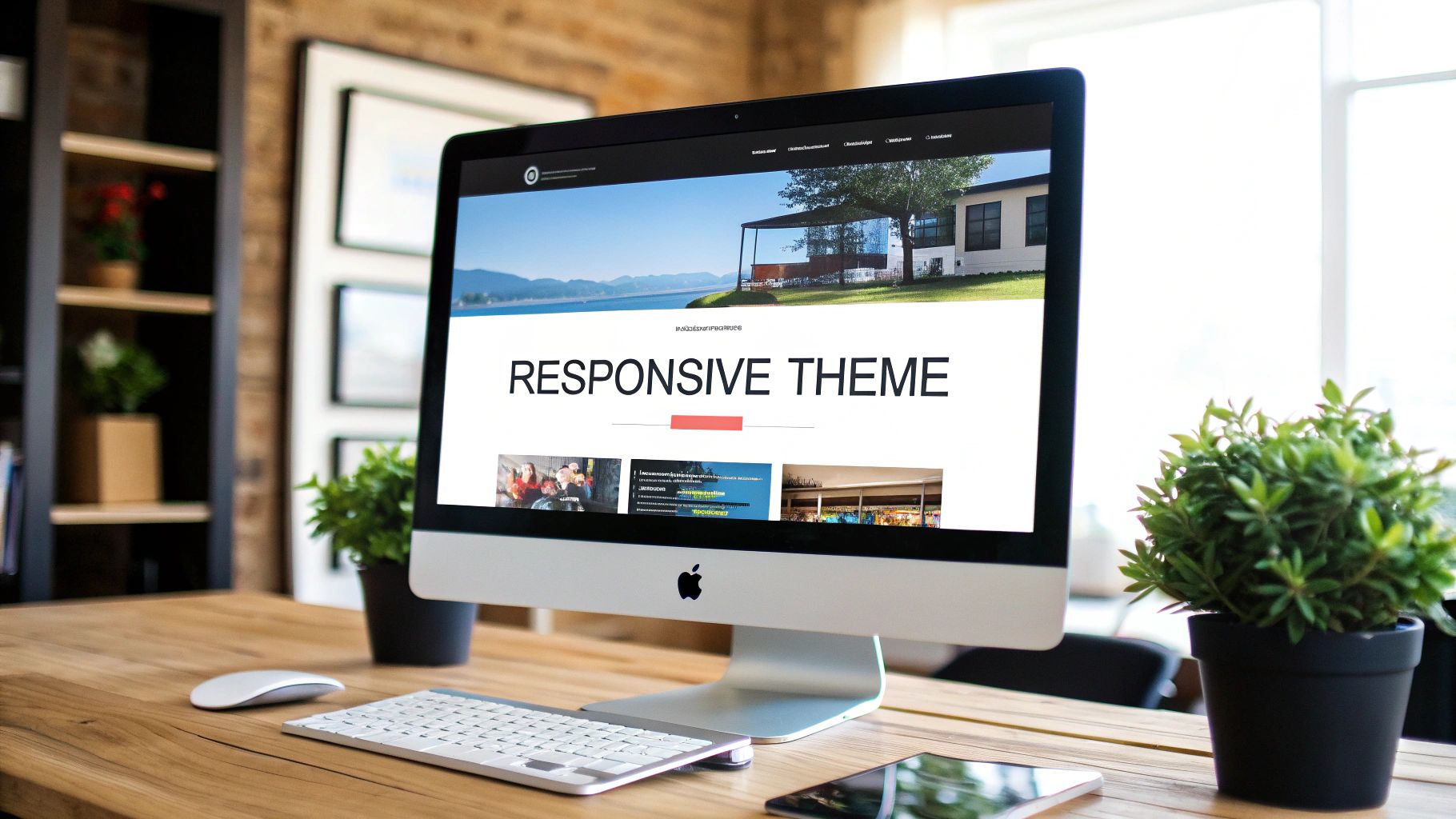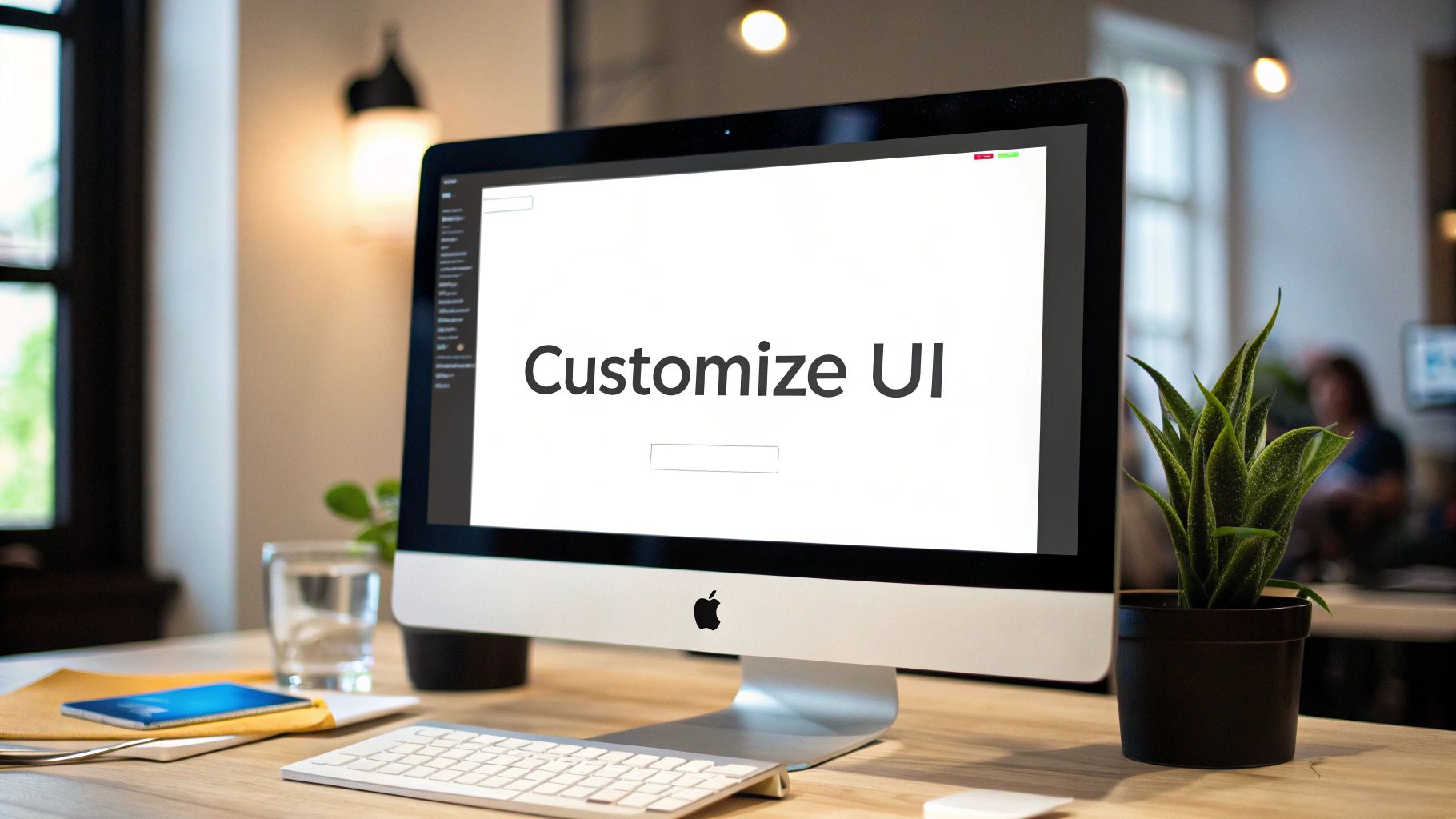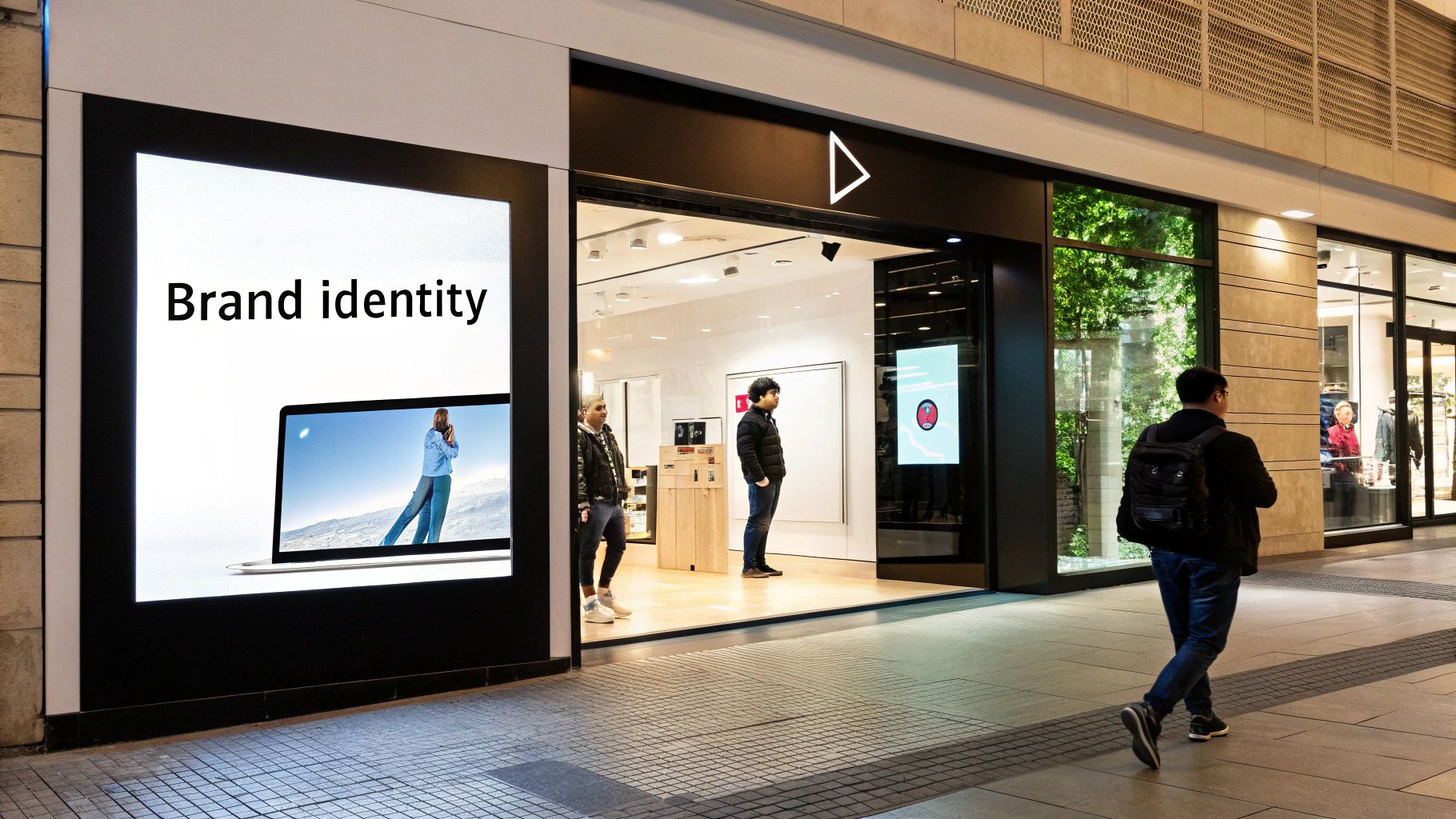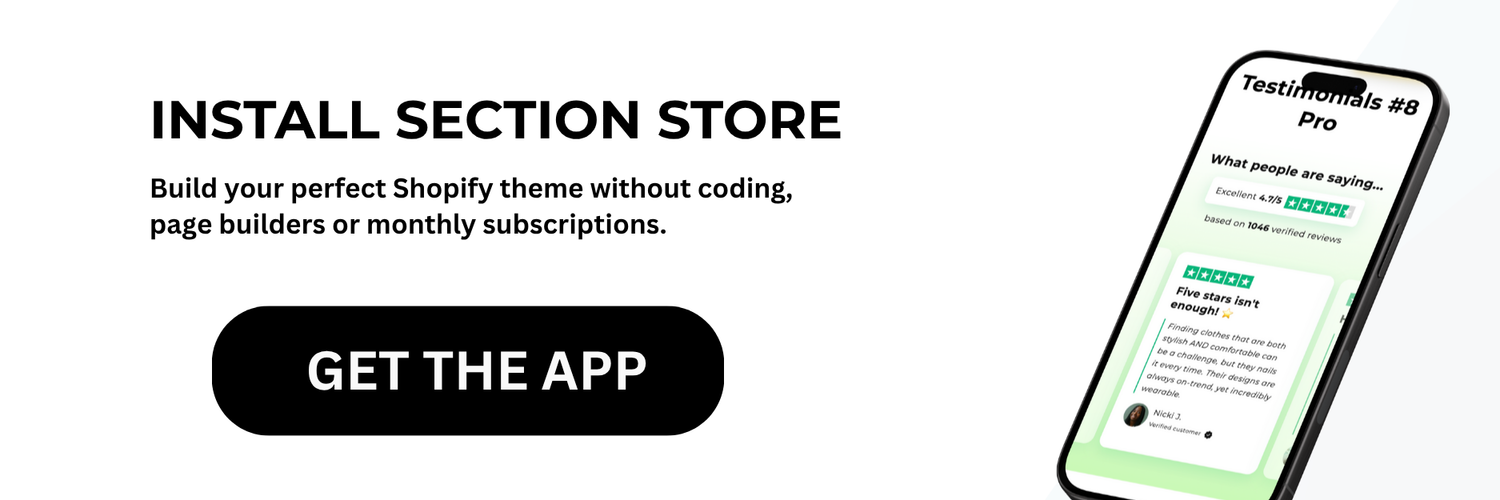Mastering Shopify Fundamentals: Where Design Begins
A visually appealing and functional Shopify store is crucial for attracting and retaining customers. Think of your online store as your digital storefront; its design creates that all-important first impression. Understanding the fundamental building blocks of Shopify's design ecosystem is the first step in creating a successful online presence. This section will guide you through the essentials, helping you navigate the admin dashboard and avoid common pitfalls.
Navigating the Shopify Admin Dashboard
The Shopify admin dashboard is your control center. This is where you'll manage everything from products and orders to the design and marketing of your store. Becoming familiar with its layout and features is key to efficient store management. For example, the "Sales" section provides a performance overview, while the "Products" section lets you manage your inventory.
Choosing the Right Theme: The Foundation of Your Design
Building a Shopify store begins with selecting the right theme. This sets the overall aesthetic and functionality, much like choosing the architectural style of a physical store. Shopify offers over 160 customizable themes in its Theme Store. These themes empower merchants to create unique storefronts that reflect their brand identity. They are user-friendly and adaptable, allowing for customization of layouts, colors, and content without extensive coding.
Popular themes like Dawn and Impact are favored for their mobile-friendly design, crucial in today's mobile-first world. Considering that 81% of Shopify purchases occur on mobile devices, this focus is essential. Choosing the right theme enhances your store’s visual appeal and improves customer engagement. For more insights into Shopify statistics, check out this resource: Shopify Statistics and Trends. This crucial decision impacts not only the appearance but also how customers navigate and interact with your store.
Organizing Your Design Workflow: A Path to Efficiency
A structured approach to your Shopify store design process ensures a smooth and effective outcome. This involves planning your design elements, organizing content, and establishing a clear implementation timeline. Think of it as creating a blueprint before construction – it minimizes errors and keeps your project on track. A style guide helps maintain design consistency.
Avoiding Common Setup Mistakes: Setting Yourself Up for Success
Many new store owners encounter common setup mistakes that can hinder their store's performance. These include neglecting mobile optimization, using low-quality images, and implementing a confusing navigation structure. By understanding these potential issues and proactively addressing them, you build a solid foundation for a successful Shopify store. This preparation contributes to a positive customer experience and improved conversion rates.
Selecting Your Perfect Theme: Beyond Aesthetics

Picking the right theme for your Shopify store is more than just finding something visually appealing. It's about choosing a design that helps you reach your business goals and sets you up for future growth. This means thinking beyond the initial look and feel and considering important factors like conversion optimization and features specific to your industry.
Conversion-Optimized Layouts: Designing for Sales
A visually stunning theme won't do much good if it doesn't encourage visitors to become paying customers. Savvy Shopify store owners understand the importance of conversion-optimized layouts. This means strategically placing elements like call-to-action buttons, product showcases, and customer testimonials to guide shoppers towards making a purchase. For example, a clear and easy-to-navigate product page with high-quality images and persuasive descriptions can greatly improve your chances of making a sale.
Industry-Specific Functionality: Tailoring Your Theme
Every industry has unique needs. A fashion store might want to emphasize visuals and showcase large product images, while a tech store might prioritize detailed product specifications and customer reviews. Choosing a theme that addresses your specific industry needs can save you time and effort down the road.
Free vs. Premium Themes: Finding the Right Balance
The classic dilemma: free or premium? While premium themes typically offer more advanced features and dedicated support, free themes can be surprisingly effective, particularly for new businesses. The key is to carefully consider your specific needs and budget. To help you decide, let's look at a comparison table.
The following table highlights the key differences and similarities between free and premium Shopify themes. It's designed to give you a better understanding of which type of theme might be the best fit for your business.
| Feature | Free Themes | Premium Themes |
|---|---|---|
| Cost | Free | Paid (One-time or subscription) |
| Design | Basic, but often customizable | More advanced and polished designs |
| Features | Limited features | Advanced features like built-in upselling, product filtering, etc. |
| Support | Community forums | Dedicated support from theme developers |
| Customization | Can be customized, but may require coding knowledge | Easier to customize with built-in options |
Ultimately, choosing between a free and premium theme depends on the unique needs of your online store. Sometimes, a simple free theme with strategic customization can be more effective than a complex, expensive premium one.
Unlocking Hidden Customization Options
Many Shopify store owners don't realize the full potential of their themes because they miss hidden customization options. These options, often found within the theme editor, allow you to adjust everything from font styles and color palettes to the layout of specific sections. Learning to use these tools can significantly reduce your reliance on expensive developers. It's like learning keyboard shortcuts – small changes that can save a lot of time and resources in the long run.
Time-Saving Theme Modification Workflows
Experienced Shopify designers utilize efficient workflows to quickly create stunning stores. These workflows often involve using pre-built sections, mastering the theme editor's functionalities, and focusing on impactful changes. By implementing these strategies, you can achieve professional results without spending hours on minor details, freeing you to focus on the most important thing: growing your business. Think of it like assembling furniture with pre-fabricated pieces – it's much faster than building from scratch. A good Shopify store design tutorial can provide the knowledge you need to build the store of your dreams.
Mobile Optimization: Where Most Sales Are Won Or Lost

While a visually appealing desktop design is important, it’s not enough for today's e-commerce businesses. Mobile optimization is now key to unlocking your Shopify store's true sales potential. If your store isn't optimized for mobile devices, you're likely losing sales.
Why Mobile-First Design Is Crucial for Shopify Stores
Mobile commerce is growing rapidly, and Shopify stores are leading the way. A mobile-first approach to your Shopify store design ensures your store looks great and works flawlessly on any device. This means considering how users interact with your store on their phones and tablets. Prioritize features like easy navigation, fast loading times, and a streamlined checkout.
The importance of mobile optimization for Shopify store design is critical. A staggering 79% of Shopify traffic comes from mobile devices. Ensuring a seamless mobile experience is vital for keeping customers. Thankfully, Shopify themes are designed with this mobile-first approach in mind. This has helped Shopify’s success, aligning with broader e-commerce trends where mobile shopping continues to grow. Learn more about mobile traffic dominance for Shopify: Shopify Statistics. Prioritizing mobile-friendly design helps merchants reduce cart abandonment and boost sales.
Testing Your Mobile Experience: A Professional Approach
Testing your mobile experience is an ongoing process. Use a variety of real devices and screen sizes to see how your store performs across different mobile platforms. This helps identify and resolve any friction points that might cause mobile users to abandon their carts.
Also, use mobile testing tools and emulators to simulate different network conditions and device capabilities. This ensures your store offers a smooth and consistent experience for all mobile users.
Key Mobile Design Elements for Enhanced Engagement
Several design elements create a positive mobile shopping experience. These include large, easily tappable buttons, optimized images, and clear product descriptions.
Make sure your call-to-action buttons are easy to see and use on smaller screens. A simplified navigation structure, often a hamburger menu, helps users find what they need.
Optimize your product images for mobile by using properly sized files that load quickly without sacrificing quality. These small details can significantly impact your mobile conversion rates.
Optimizing Page Layouts for Smaller Screens
Not all page layouts work well on mobile. Single-column layouts are generally best on smaller screens, eliminating horizontal scrolling. This makes it easier for users to navigate with one hand.
However, some pages, like product pages, might benefit from a two-column layout to show multiple product images or variations. Prioritize clear and intuitive navigation, no matter the layout.
Strategic App Integration: Extending Your Store's Power

Building a successful Shopify store takes more than just a good-looking theme and a mobile-friendly design. You need a smart plan for adding apps, making sure they improve your store without slowing it down or making it hard to use. This section explores how to effectively use Shopify's extensive app ecosystem.
Evaluating App Quality: Going Beyond Star Ratings
Star ratings are a good place to start, but they don't show the whole picture. To really understand an app's quality, look at things like the developer's reputation, how often the app is updated, and the quality of customer support. Also, read user reviews carefully to spot any potential problems. This thorough review process will help you select apps that fit your long-term business goals.
Identifying Genuine App Needs vs. Native Features
Before installing an app, ask yourself: "Can Shopify already do this?" Many store owners forget about Shopify’s built-in features. This leads to unnecessary app installations, potentially slowing down the site and creating technical debt. Shopify’s built-in discounts often work well for simple promotions. However, you might need an app for more complex features like loyalty programs or tiered pricing.
Integrating New Functionality: Avoiding Technical Debt
Even good apps can create technical debt if you don't integrate them carefully. Think about how the app works with your theme and other apps. For example, several apps doing the same thing can clash and cause unexpected problems. Also, watch out for the effect on site speed. Too many apps can make your store slow, resulting in a bad user experience and lower conversion rates.
Hidden Costs and Benefits of Design-Enhancing Apps
Design-enhancing apps can offer major benefits. They can improve product displays and offer personalized recommendations. But they can also have hidden costs like monthly fees, performance issues, or even security risks. It’s important to carefully weigh the potential costs against the benefits before adding any new app to your Shopify store design tutorial process. Shopify’s app store offers over 13,000 apps giving merchants a wide range of options. These apps cover everything from design and customer service to inventory management and social media. This allows businesses to customize their stores to fit their specific needs, improving customer experience or expanding sales channels. For example, live chat apps can increase average order value by 10-15%. Customers feel more supported during their shopping experience, which can lead to higher sales. Learn more about Shopify: BigCommerce vs. Shopify.
By carefully considering these points, you can use the power of Shopify apps to build an exceptional online store that turns visitors into customers. This strategic approach is essential for a successful and growing online business.
Crafting Product Pages That Convert Browsers To Buyers

Just like an inviting physical store, your online product pages should entice customers to buy. Think of these pages as your 24/7 sales team. This section explores the psychology of effective product pages and offers practical tips for boosting conversions on your Shopify store.
The Art of Persuasive Product Descriptions
Product descriptions shouldn't just list features. Instead, they should connect with your audience on an emotional level. Speak to both the logical and emotional needs of your target customer. For example, instead of simply listing the technical specs of a waterproof jacket, describe the feeling of staying dry and comfortable during a rainy hike.
Image Strategies That Showcase Your Products
High-quality images are crucial for presenting your products effectively. Use a range of photos to display the product from various angles, highlight important features, and show it in action. Lifestyle images are also powerful. They help customers imagine themselves using your product, creating a more immersive and engaging shopping experience.
Building Trust to Overcome Purchase Hesitation
Trust is key for overcoming customer hesitation. Use trust signals like customer reviews, testimonials, and security badges to reassure visitors that their purchase is secure. A simple "Secure Checkout" badge can significantly boost conversions. Guarantees and warranties also reinforce confidence in your products and brand, showing your dedication to customer satisfaction.
Structuring Product Information for a Natural Flow
Organize product information clearly and logically to guide customers towards the purchase. Use headings, bullet points, and white space to break up text, making the page easy to scan. This improves readability and makes it simpler for customers to find the information they need. A prominent and clear call-to-action makes adding items to the cart effortless.
To help you optimize your Shopify product pages for better conversions, here’s a handy table summarizing key elements and their impact:
| Product Page Conversion Elements | Purpose | Implementation Tips | Impact on Conversion |
|---|---|---|---|
| High-Quality Images | Showcase product features and benefits visually | Use a variety of images, including lifestyle shots and close-ups | Increases engagement and purchase intent |
| Compelling Product Descriptions | Connect with customers emotionally and rationally | Highlight benefits, address pain points, and use persuasive language | Improves understanding and reduces purchase hesitation |
| Trust Signals | Build credibility and reduce risk perception | Display customer reviews, testimonials, security badges, and guarantees | Increases confidence and encourages purchases |
| Clear Call-to-Action | Guide customers towards the desired action | Use prominent buttons with clear wording and placement | Makes it easy for customers to add to cart and checkout |
| Structured Information | Improve readability and navigation | Use headings, bullet points, and white space to break up text | Enhances user experience and reduces cognitive load |
This table highlights the essential elements of a high-converting product page. By implementing these strategies, you can create a more effective and persuasive online shopping experience.
Real-World Examples: Before & After Design Adjustments
Real-world examples of product page redesigns offer valuable lessons. Studying before-and-after examples, particularly those where small changes led to big conversion improvements, provides practical insights. These examples can show how adjusting image placement, rewriting product descriptions, and redesigning call-to-action buttons can significantly impact sales. Using these lessons in your own Shopify store design tutorial process can create product pages that resonate with your audience and drive conversions.
Designing a Frictionless Path To Purchase
A beautiful Shopify store design attracts customers, but a seamless checkout seals the deal. This final step significantly impacts your conversion rate. By analyzing top-performing Shopify stores, we can uncover strategies that transform hesitant browsers into confident buyers. This section provides practical techniques to optimize your checkout process for maximum conversions.
Streamlining The Path To Purchase
Every unnecessary step in the checkout process is a potential point of friction. While collecting essential information for order fulfillment is necessary, streamlining the process is key. This involves minimizing the number of form fields and offering guest checkout options.
Requiring account creation can deter customers, leading to cart abandonment. Strive for a balance between necessary information and a quick, easy checkout. Think of it like a physical store: long lines and complicated payment processes can discourage purchases.
Psychological Triggers For Overcoming Hesitation
Even at the final stage, customers can experience hesitation. Implement psychological triggers to nudge them towards completion. Security badges and clear money-back guarantees build trust and address security concerns.
Displaying limited-time offers or highlighting low stock levels can create urgency, encouraging immediate action. These subtle cues can be remarkably effective in overcoming last-minute doubts.
Designing A Cart Experience That Encourages Completion
The shopping cart itself plays a vital role in the checkout process. Displaying clear product images, summaries, and prominently placed call-to-action buttons reassures customers and guides them to the next step.
Offering various payment options, such as PayPal and Shop Pay, caters to different preferences and adds convenience. A clean and efficient online cart promotes completion rather than abandonment.
Post-Purchase Strategies For Building Loyalty
The customer journey doesn't end with the purchase. Creating positive post-purchase experiences is vital for building loyalty and encouraging repeat business. A personalized thank you message, order confirmation email, and easy access to tracking information demonstrate care and professionalism.
Offering exclusive discounts or early access to new products for returning customers incentivizes future purchases and fosters a sense of community. These post-purchase touchpoints transform first-time buyers into loyal customers.
Reducing Cart Abandonment: Strategies and Techniques
Cart abandonment is a persistent challenge for online retailers. Field-tested strategies for reducing cart abandonment include exit-intent pop-ups offering discounts or free shipping to incentivize completion.
Sending abandoned cart recovery emails reminding customers of their items and highlighting the benefits of completing the purchase can be surprisingly effective. These strategies help recapture lost sales and improve overall conversion rates.
By implementing these techniques, you can transform your Shopify store's checkout experience from a potential bottleneck into a smooth path to purchase. A seamless and user-friendly checkout process is key to increasing conversions and driving business growth.
Ready to take your Shopify store to the next level? Check out Section Store for customizable sections that can be easily integrated into any theme. Visit Section Store today and discover how easy it is to create a high-converting Shopify store.



